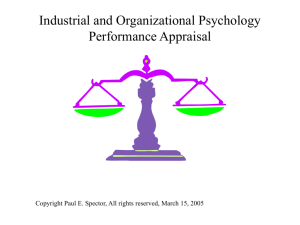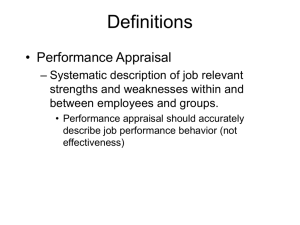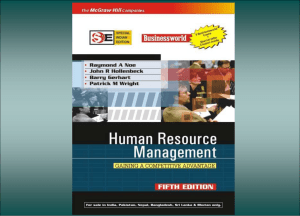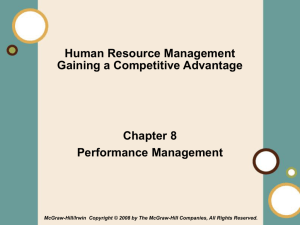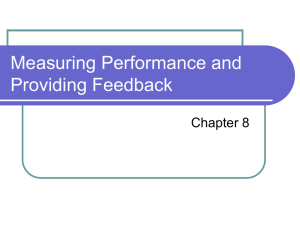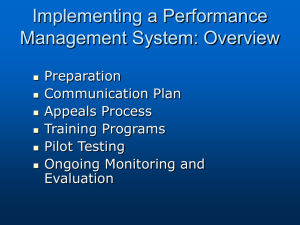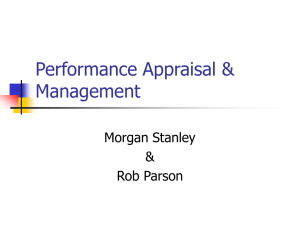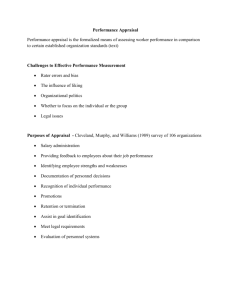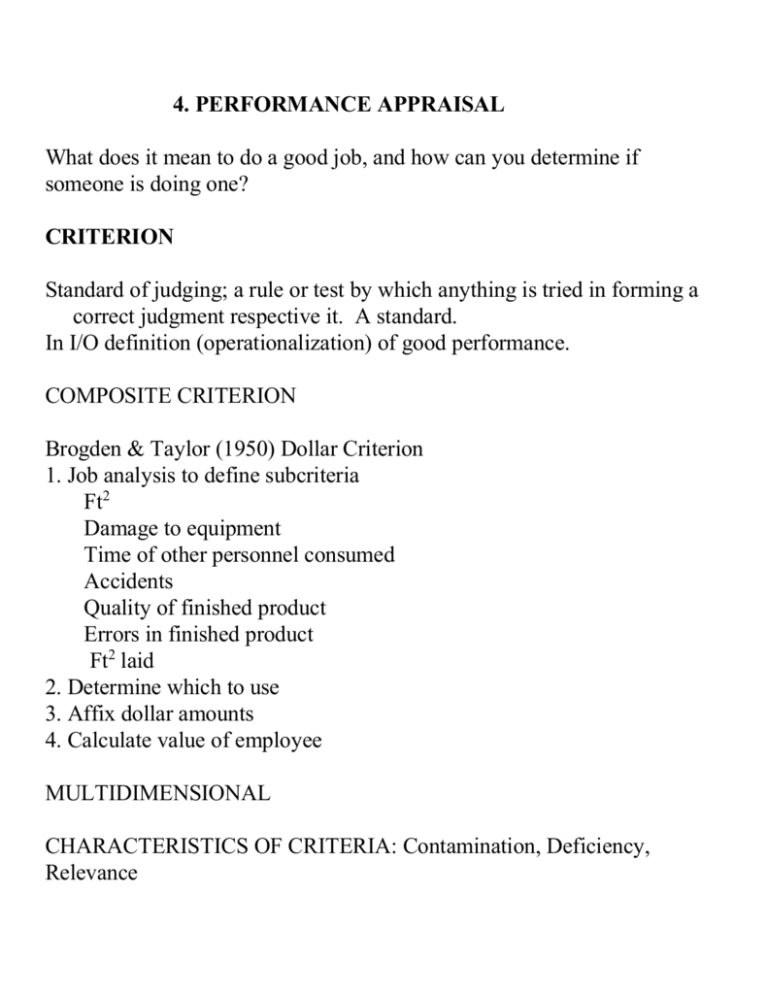
4. PERFORMANCE APPRAISAL
What does it mean to do a good job, and how can you determine if
someone is doing one?
CRITERION
Standard of judging; a rule or test by which anything is tried in forming a
correct judgment respective it. A standard.
In I/O definition (operationalization) of good performance.
COMPOSITE CRITERION
Brogden & Taylor (1950) Dollar Criterion
1. Job analysis to define subcriteria
Ft2
Damage to equipment
Time of other personnel consumed
Accidents
Quality of finished product
Errors in finished product
Ft2 laid
2. Determine which to use
3. Affix dollar amounts
4. Calculate value of employee
MULTIDIMENSIONAL
CHARACTERISTICS OF CRITERIA: Contamination, Deficiency,
Relevance
Theoretical Criterion
Deficiency
Relevance
Contamination
Actual Criterion
PERFORMANCE APPRAISAL
Determination and Documentation of Individual's Performance
Should be tied directly to criteria
USES
Administrative decisions (promotion, firing, transfer)
Employee development and feedback
Criteria for research (e.g., validation of tests)
Documentation for legal action
Training
METHODS
Objective Methods
Advantages
Consistent standards within jobs
Not biased by judgment
Easily quantified
Face validity-bottom line oriented
Disadvantages
Not always applicable (teacher)
Performance not always under individual's control
Too simplistic
Performance unreliable--Dynamic
Criterion
Subjective Methods: Rating Scales
Trait based graphic rating scale
Behavior based: Critical incidents
Mixed Standard Scale
Behaviorally Anchored Rating Scale
Behavior Observation Scales
Problems:
Rating errors: Leniency, Severity, Halo
Supervisor subversion of system--leniency as a strategy
Mixed purposes (feedback vs. administrative)
Negative impact of criticism
SOLUTIONS TO PROBLEM OF RATER ERRORS
ERROR RESISTANT FORMS
Behaviorally Anchored Rating Scale, BARS
Behavior Observation Scale, BOS
Mixed Standard Scale, MSS
Research does not show these forms to be successful in eliminating errors
RATER TRAINING
Rater error training: instructs raters in how to avoid errors
Reduces halo and leniency error
Less accuracy in some studies
Frame of reference training: Give raters examples of performance and
correct ratings
Initial research promising in reducing errors (Day & Sulsky, 1995, Journal
of Applied Psychology), but too new to tell for certain
SOUND PERFORMANCE APPRAISAL PRACTICES TO REDUCE
PROBLEMS
Separate purposes
Raises delt with separately from feedback
Consistent feedback, everyday
Limit criticism to one item at a time
Praise should be contingent
Supervisors should be coaches
Appraisal should be criterion related, not personal
TECHNOLOGY
Technology helpful for performance appraisal
Employee performance management systems
Web-based
Automated—reminds raters when to rate
Reduces paperwork
Provides feedback
360-degree feedback systems
Ratings provided by different people
Peers
Subordinates
Supervisors
Self
Big clerical task in large organizations to track/process ratings
Web makes 360s easy and feasible
Consulting firms available to conduct 360s
Performaworks
LEGALLY DEFENSIBLE PERFORMANCE APPRAISAL
Barrett and Kernan defensible performance appraisal system
Job analysis to define dimensions of performance
Develop rating form to assess dimensions from prior point
Train raters in how to assess performance
Management review ratings and employee appeal
Document performance and maintain detailed records
Provide assistance and counseling
Werner and Bolino (1997, Personnel Psychology) analysis of 295 court
cases
Organizations lost 41% of discrimination cases overall
Organizations using multiple raters lost only 11%
Safe system
Job analysis
Written instructions
Employee input
Multiple raters
Employee input leads to better attitudes, even when ratings are lower
Copyright Paul E. Spector, All rights reserved, July 22, 2002.

